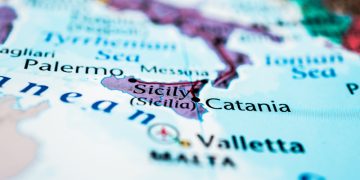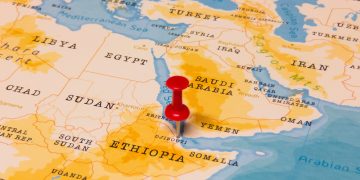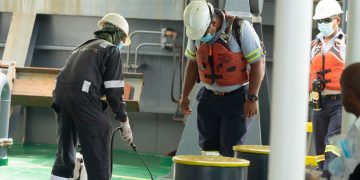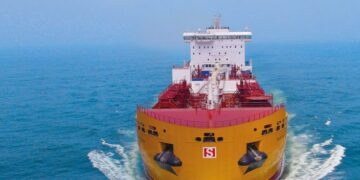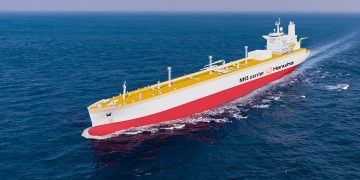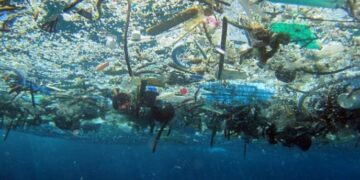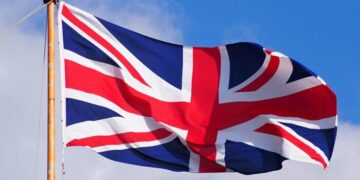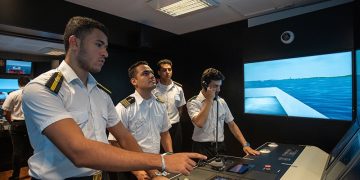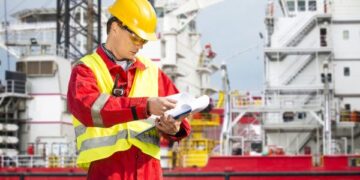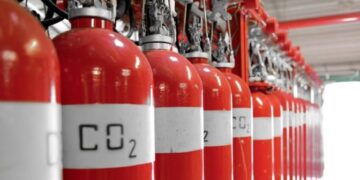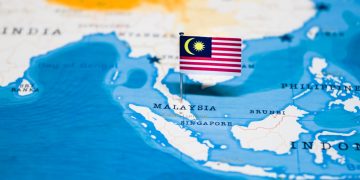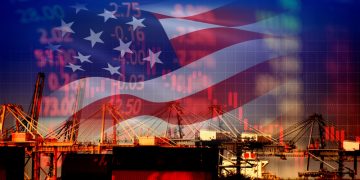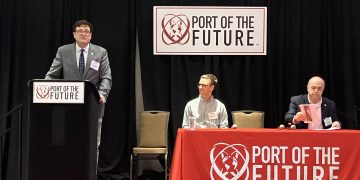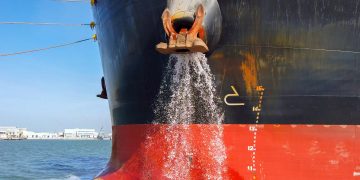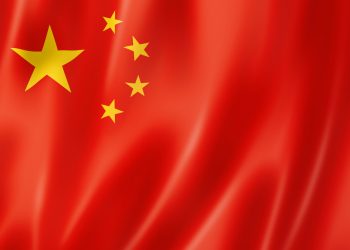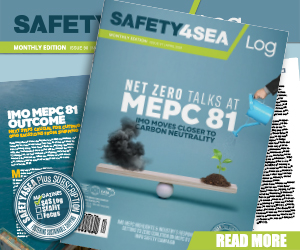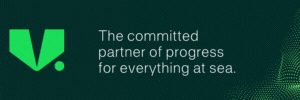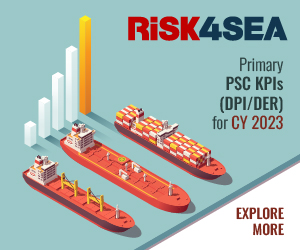Ports in southern China are preferred
 Hong Kongs status as one of the worlds leading maritime centres is not under threat, but change is coming. At the start of April this year container giant Maersk cut its calls at the port of Hong Kong by a quarter, from around 30 per week to 22-23. The reason? The carrier said it would be transferring most of the calls to a terminal at the port of Nansha near Guangzhou in southern Mainland China which is partly owned by sister company APM Terminals.
Hong Kongs status as one of the worlds leading maritime centres is not under threat, but change is coming. At the start of April this year container giant Maersk cut its calls at the port of Hong Kong by a quarter, from around 30 per week to 22-23. The reason? The carrier said it would be transferring most of the calls to a terminal at the port of Nansha near Guangzhou in southern Mainland China which is partly owned by sister company APM Terminals.
The transfer was a huge blow both to Modern Terminals, which handles most of Maersks calls at Hong Kong, and to Hong Kongs status as the regions leading container hub. More blows could follow.
The port lost its status as the worlds largest container port back in 2004 and was ranked third according to 2009 throughput totals, some distance behind Singapore and Shanghai. The ports of Shenzhen and Guangzhou, located over the border in Mainland China, were fourth and sixth in the rankings.
Last year the port of Hong Kong handled 23.7m teu, again putting it in third place although the figure was still below the record set in 2008 pre-global financial crisis.
The critical ingredients for supply chain operators when it comes to choice of port cover a range of factors including liner service availability, consolidation options, speed and cost.
For forwarders adept at finding the path of least resistance and lowest cost, Hong Kongs traditional appeal compared with using ports in southern China and this also explains the dominance on export lanes of Hong Kong International Airport compared with airports Guangzhou and Shenzhen has been its embrace of modern business practices which extends across government bodies and its trading bureaucracy.
Even though it has often been one of the most expensive ports in the world to load it has remained the first choice for most shippers and lines because of its excellent connectivity and service levels.
Its location to the worlds factory region of southern Mainland China has also, clearly, been a major factor in its success. Yet Chinas import and export patterns are changing. As Maersk acknowledged when it signalled its change in strategy, China is becoming a growing importer and its Go West strategy and other policies designed to spread the benefits of economic development ever inland are changing the trading landscape. Lengthening supply chains are giving carriers and shippers food for thought.
Ports in southern China such as Shenzhen and Guangzhou are considerably closer to factories in southern China, and not only do they offer cheaper handling rates but customs offices are attempting to modernise systems with some success. Increasingly, they offer a range of direct, regular mainline connections to the rest of the world, removing the need to tranship using trucks and barge to access Hong Kongs multitude of international connections.
And, as Paul Tsui, Chairman of the Hong Kong Association of Freight Forwarding and Logistics (Haffa), admits, Hong Kongs connectivity to western provinces of China is limited, while rival ports in Shenzhen and Guangzhou are increasingly well served by road and rail services.
Maersk Line says it will now serve South China through three gateways at Yantian, Nansha as well as Hong Kong, with Nansha primarily used for traffic to and from the West Pearl River Delta for whom it offers lower trucking and barge costs and less operational risk on hinterland transport because of its direct liner services.
Nansha also does not have the barge congestion as seen in many other ports in the region during peak season, a spokesman for the line tells Port Strategy. Instead of numerous barge sailings with uncertain onwards connections, we will offer fixed connecting windows and thus a reliable end-to-end service.
Elsewhere in Asia, new deep draft ports are also springing up, most notably at Cai Mep in Vietnam. In a low freight rate environment characterised by slow steaming strategies and excess capacity, direct calls with the largest ships possible are an attractive option for many lines when compared with hub and spoke options. Transit times are also becoming less important for many shippers who have now adapted supply chains and inventory management systems to slow deliveries.
Truong Bui, a senior consultant at Drewrys Singapore office, says the impact of more direct calls by lines operating on main line trades will have far reaching implications, not just for Hong Kong, but also for Asias other transhipment hubs.
In March, for example, the newly opened Cai Mep International Terminal (CMIT), a joint venture between APM Terminals, Vietnam National Shipping Lines and Saigon Port, received a 11,500 teu capacity vessel operated by CMA CGM. The CMA CGM Columba is the largest container vessel ever to call in Vietnam and was en route to North Europe as part of the lines FAL3 service.
Mr Truong says more deep draft terminals are planned in northern Vietnam which will be able to receive the largest vessels deployed on Asia-Europe and Transpacific trades.
Now there are more ports available that can take main line calls, lines can call at Vietnam and then head for the US and Europe directly without transhipping.
The upshot of this trend, he says, is that cargo previously transhipped from Vietnam via Singapore, Kaohsiung and Hong Kong will in future be shipped direct to destination from Vietnams own terminals. Hong Kong will lose market share, he predicts.
Although unlikely at present, another factor in the future could be the liberalisation of Chinas cabotage rules. Singapore-based carrier APL, for example, currently offers 29 vessel calls in Hong Kong each week offering worldwide connections. But a spokesperson says that if cabotage reform was undertaken the carrier would establish hubs in China. We are in regular dialogue with the relevant parties in China, she says.
The advantage of a hub is the many and frequent daily onward shipments available and the economies of scale that are generated by volume. Any decline in a hubs network of services can be damaging. Mr Truong says that if China did change its cabotage rules, Hong Kong could lose a sizeable chunk of its transhipment business.
Although the loss of the Maersk calls could turn out to be part of the carriers strategy to win a reduction in port costs, or to support its equity stake at Nansha, if other carriers followed suit then Hong Kongs unique selling point for customers – its global connectivity would be impaired.
I think Shenzhen will overtake Hong Kong this year as the worlds third largest container port, says Mr Tsui. Hong Kong has limited opportunity to expand, so it must rely on increasing efficiency. Other ports can expand more easily to take additional services.
Source: Port Strategy




